In recent years, fava beans—once considered an Old World delicacy—have made a powerful comeback in American kitchens and home gardens. Known for their rich, buttery texture and nutty flavor, these beans are gaining popularity among chefs, nutritionists, and gardeners alike.
Whether you call them fava beans, broad beans, or horse beans, these ancient legumes are prized for their exceptional nutrition, soil-enriching properties, and culinary versatility. From hearty soups to creamy dips, fava beans bring both flavor and function to every plate.
If you’ve ever wondered why these beans are so beloved across the globe—and how you can grow and enjoy them right here in the U.S.—this detailed guide covers everything from planting tips to delicious recipes and health benefits.
What Are Fava Beans?
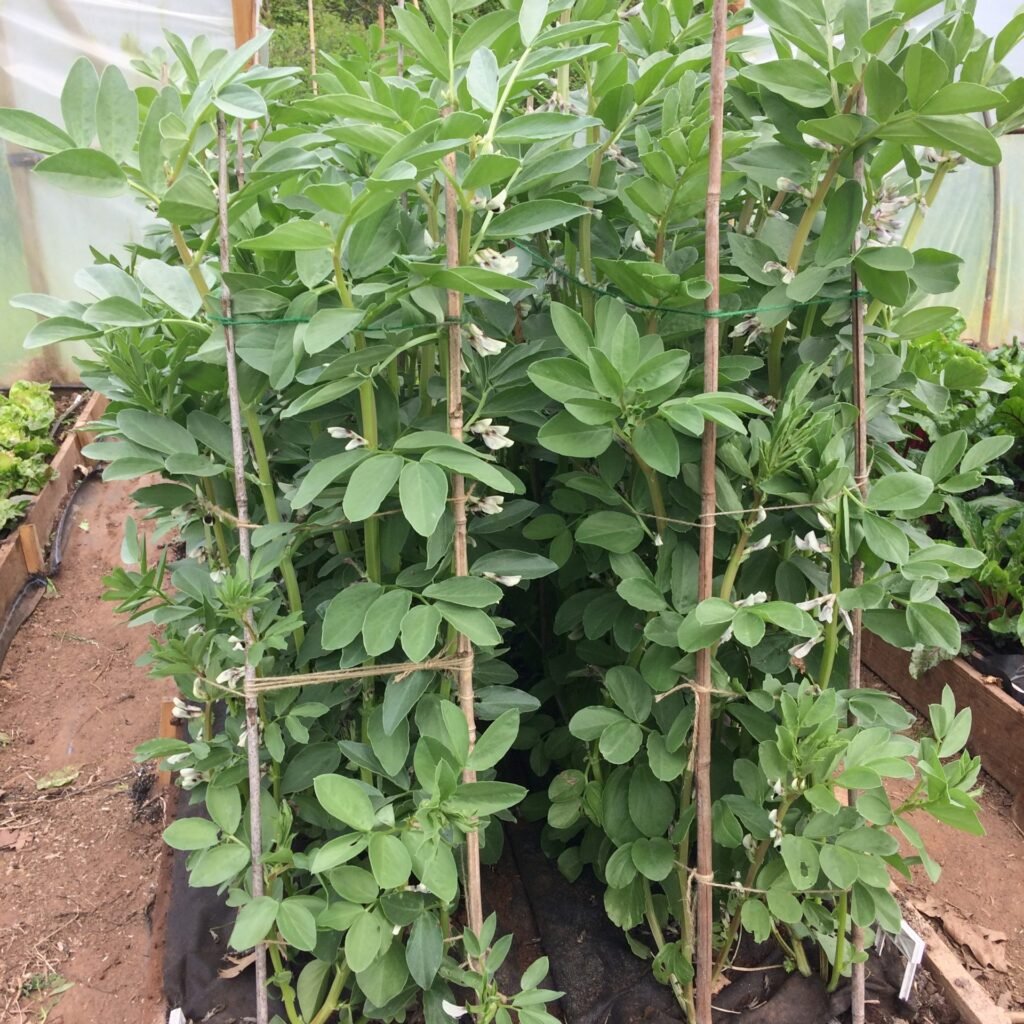
Fava beans (Vicia faba) are a cool-season legume that thrives in mild temperatures. They differ from typical green beans or snap beans because you eat the large, protein-rich seeds rather than the pods. Each thick, slightly fuzzy pod contains 4–8 beans that can be eaten fresh or dried.
Fava beans have been cultivated for over 6,000 years and remain a dietary staple in Mediterranean, Middle Eastern, and Latin American cuisines. Today, they are making their mark in American sustainable farming and plant-based diets due to their versatility and health value.
Nutritional Profile: A True Superfood
Fava beans are a nutrient-dense powerhouse that delivers high levels of plant-based protein, fiber, and essential vitamins and minerals.
Per 100 grams of cooked fava beans:
- Calories: 110
- Protein: 8 grams
- Fiber: 6 grams
- Carbohydrates: 19 grams
- Fat: Less than 1 gram
- Key Nutrients: Iron, Folate, Magnesium, Vitamin B1 (Thiamine), and Potassium
They’re naturally gluten-free, cholesterol-free, and low in fat, making them an ideal food for heart health and balanced nutrition.
Top Health Benefits of Fava Beans
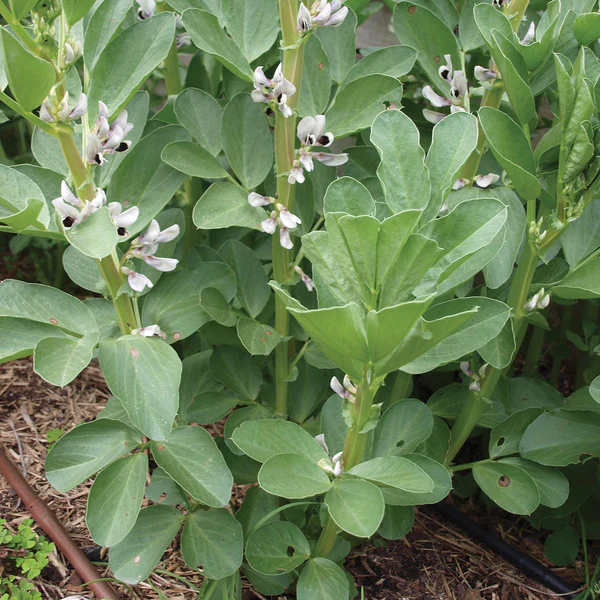
1. Excellent Source of Plant Protein
Fava beans are a top choice for vegetarians and vegans looking for high-quality plant protein. They contain all nine essential amino acids, supporting muscle growth and tissue repair.
2. Heart Health Booster
Rich in fiber, magnesium, and potassium, fava beans help lower blood pressure and cholesterol levels, protecting against heart disease.
3. Supports Digestion and Gut Health
The soluble fiber in fava beans aids digestion and promotes healthy gut bacteria. It also helps regulate blood sugar levels.
4. Promotes Healthy Blood and Energy
Thanks to their high iron and folate content, fava beans help prevent anemia and improve red blood cell production—keeping you energized throughout the day.
5. Weight Management Aid
Low in calories and high in protein and fiber, fava beans promote satiety and reduce cravings, making them a smart choice for weight loss diets.
6. Strengthens Bones and Immunity
Fava beans provide calcium, manganese, and vitamin K, all essential for maintaining strong bones and a healthy immune system.
How to Grow Fava Beans in Your American Garden
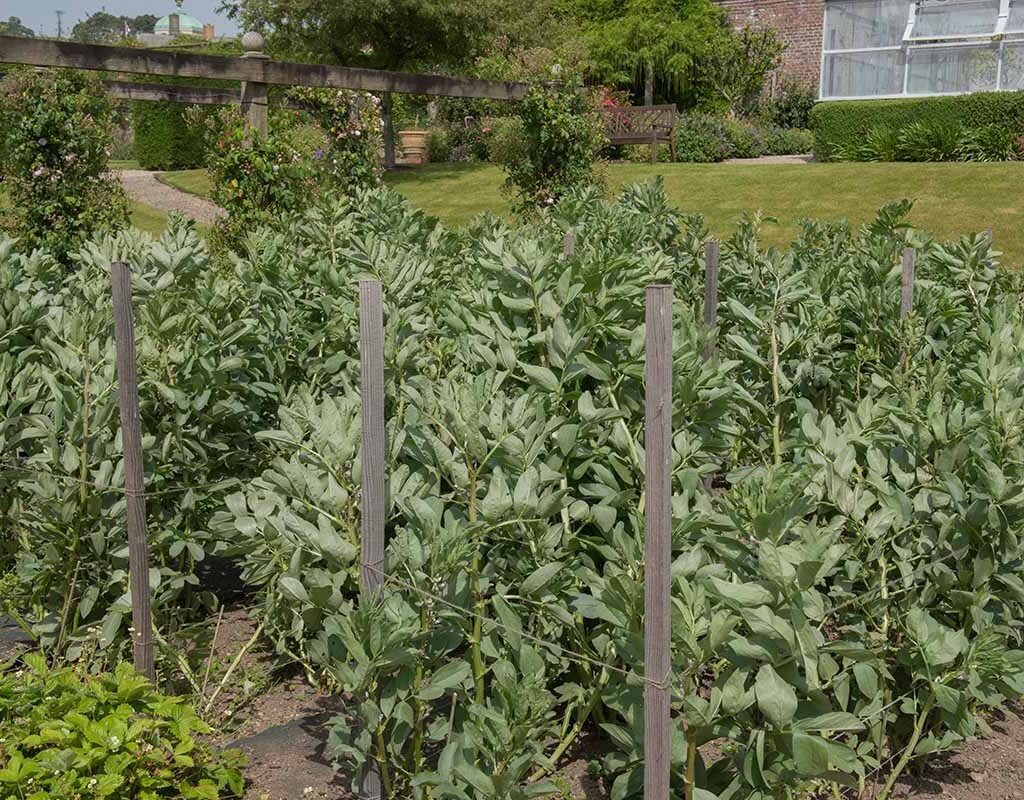
Fava beans thrive in cool climates, making them one of the first crops to plant in early spring or fall. They’re also excellent for improving garden soil, as they fix nitrogen naturally—a sustainable gardener’s dream.
1. When to Plant
- In the South or coastal areas: Plant in fall or winter for a spring harvest.
- In northern regions: Plant in early spring as soon as the soil is workable.
Fava beans grow best at temperatures between 40°F and 75°F and can tolerate light frost.
2. Soil Preparation
Choose well-draining, fertile soil with a pH between 6.0 and 7.5. Enrich the soil with compost before planting. Since fava beans fix nitrogen, they rarely need fertilizer.
3. Sowing the Seeds
- Plant seeds about 1–2 inches deep and 6 inches apart.
- Space rows 18–24 inches apart for good air circulation.
- Soak seeds overnight before planting to speed up germination.
4. Watering and Maintenance
Water regularly, keeping the soil evenly moist but not waterlogged. Apply mulch to retain moisture and suppress weeds.
5. Supporting the Plants
Although fava beans have sturdy stems, tall varieties benefit from light staking to prevent lodging (falling over) in windy conditions.
6. Harvesting
- For fresh beans: Harvest pods when they are plump and green.
- For dry beans: Allow pods to dry on the plant until they turn brown and brittle.
You can also harvest young leaves and shoots, which are tender and delicious in salads or stir-fries.
Common Garden Problems and Solutions
Fava beans are generally low-maintenance but can face a few common challenges:
- Aphids: Wash off with a jet of water or spray with neem oil.
- Blackflies: Remove infested shoots or plant companion herbs like mint to deter them.
- Fungal Diseases (like rust or chocolate spot): Space plants properly and water at the base to prevent leaf wetness.
- Root Rot: Avoid overwatering and ensure good drainage.
With a bit of care, your plants will produce abundant, healthy pods throughout the season.
Cooking with Fava Beans: From Farm to Table
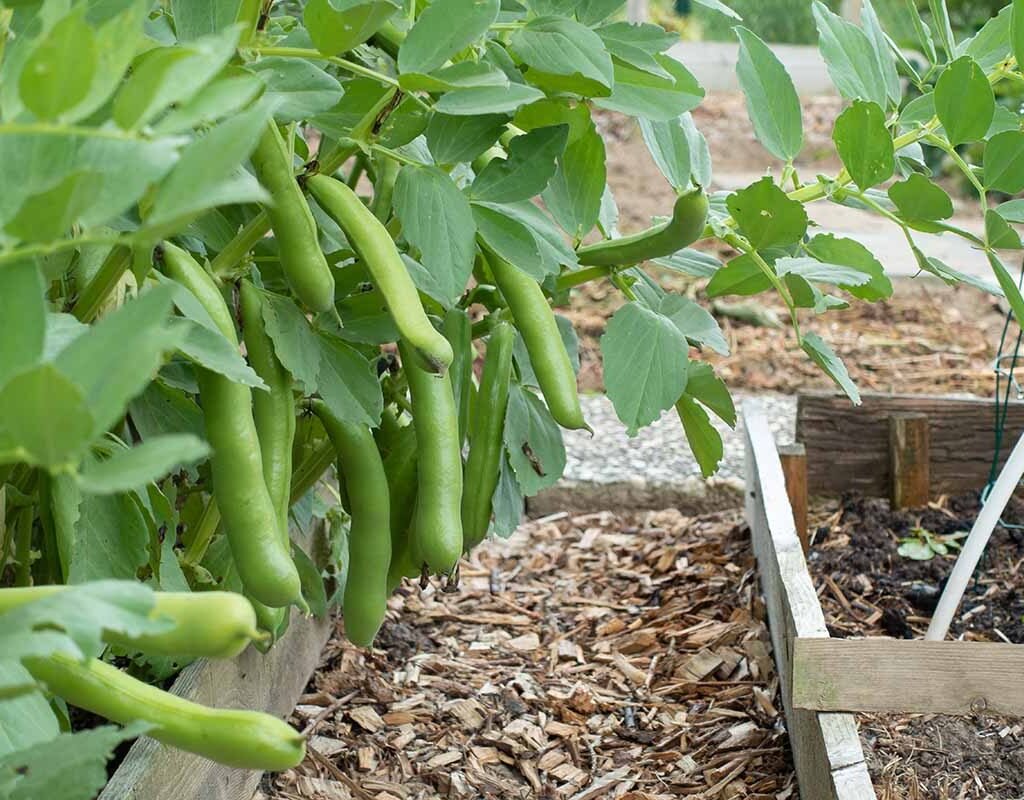
Fava beans are loved for their creamy texture and nutty, slightly sweet flavor. They shine in both traditional dishes and modern American recipes.
1. Fresh vs. Dried Fava Beans
- Fresh fava beans: Best for spring dishes—blanched, sautéed, or pureed.
- Dried fava beans: Ideal for soups, stews, and dips once soaked and cooked.
Here are some delicious ways to enjoy them:
1. Fava Bean Hummus
Blend cooked fava beans with garlic, tahini, olive oil, and lemon juice for a vibrant green dip. Serve with pita bread or veggie sticks.
2. Sautéed Fava Beans with Garlic and Lemon
A quick and healthy side dish—sauté blanched beans in olive oil with minced garlic, lemon zest, and salt.
3. Fava Bean Soup
Simmer fava beans with onions, celery, garlic, and herbs for a hearty, protein-packed soup perfect for cool evenings.
4. Pasta with Fava Beans and Parmesan
Toss fava beans with pasta, olive oil, parmesan cheese, and fresh basil for a simple, elegant meal.
5. Fava Bean Salad with Mint and Feta
Combine cooked fava beans with crumbled feta, red onion, and fresh mint for a refreshing Mediterranean-inspired salad.
6. Falafel with Fava Beans
Blend soaked fava beans with chickpeas, herbs, and spices to make light, crispy falafel—one of the most beloved Middle Eastern street foods.
Preserving and Storing Fava Beans
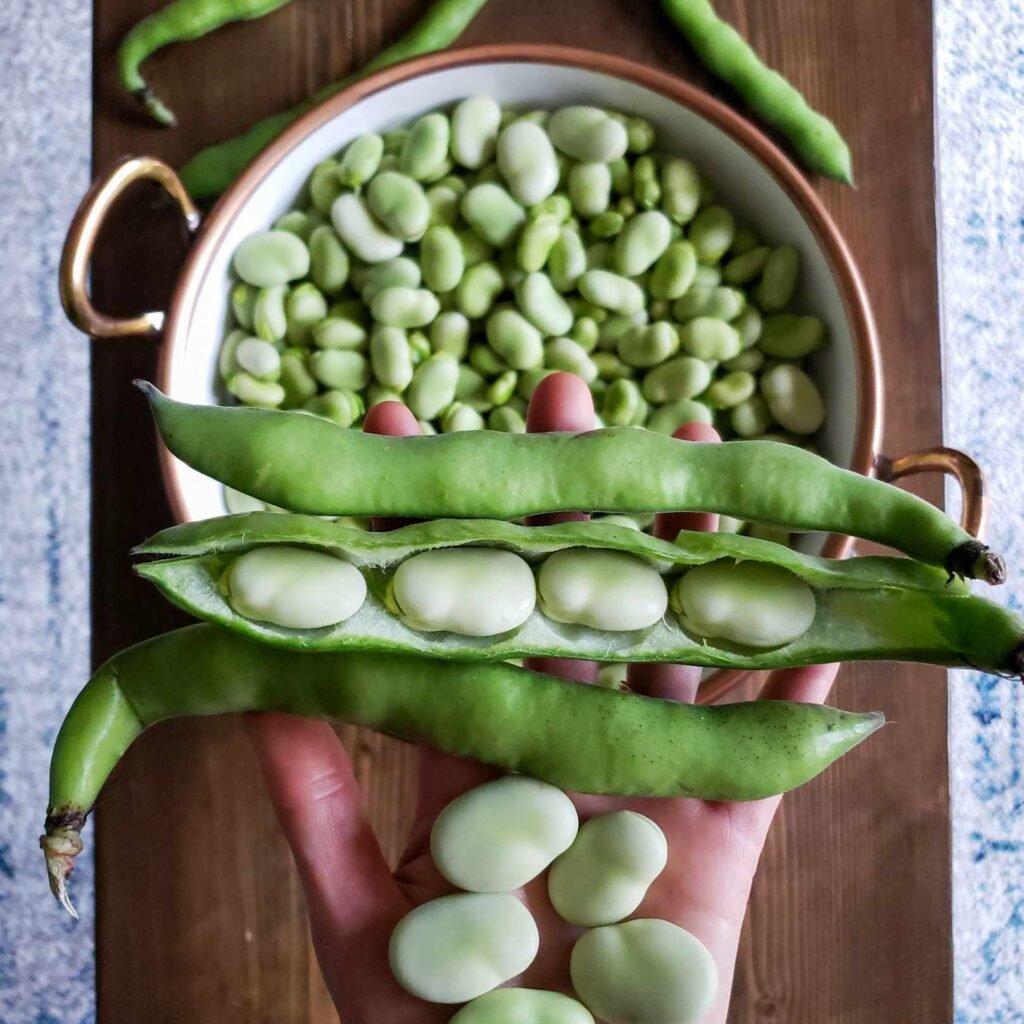
Fava beans can be enjoyed year-round if preserved properly:
- Freezing: Blanch shelled beans for 2–3 minutes, cool in ice water, dry, and freeze in airtight bags.
- Drying: Let mature pods dry on the plant, then store the shelled beans in jars for up to 12 months.
- Canning: Pressure-can cooked beans to extend shelf life.
For best flavor, remove the outer skins of mature beans before freezing or cooking—they’re edible but can be tough.
Sustainability and Soil Health Benefits
Fava beans are more than just food—they’re an eco-friendly crop that enhances your garden’s soil.
As nitrogen fixers, they naturally convert atmospheric nitrogen into forms that plants can use. This reduces the need for synthetic fertilizers and improves soil fertility for future crops.
Many American gardeners plant fava beans as a cover crop in fall or winter to enrich the soil and prevent erosion. Plus, their white blossoms attract pollinators, supporting local biodiversity.
Fun Facts About Fava Beans
- Fava beans were a dietary staple in ancient Egypt, Greece, and Rome.
- The word “fava” comes from the Italian word for bean, and they are still widely used in Italian dishes today.
- They’re one of the few beans that can grow in cool climates, making them ideal for northern U.S. gardens.
- In parts of the Mediterranean, fava beans are considered a symbol of luck and fertility.
Buying and Storing Fava Beans
When shopping for fresh fava beans:
- Choose firm, bright green pods without blemishes.
- Avoid pods that feel soft, yellowed, or dry.
Store unshelled fava beans in the refrigerator for up to 5 days. Once shelled, they’ll last 2–3 days in an airtight container or can be frozen for later use.
Conclusion: Why Fava Beans Deserve a Place in Every American Garden
From their incredible nutritional profile to their soil-improving power, fava beans are a true gem in both the garden and the kitchen. They’re easy to grow, packed with protein, and delicious in a wide variety of dishes—from rustic soups to elegant salads.
As more Americans embrace home gardening, sustainable living, and plant-based eating, fava beans are becoming a must-have crop for anyone looking to eat healthier and grow greener.
So, this season, plant a few rows of fava beans and watch them thrive. When harvest time comes, you’ll enjoy a truly rewarding experience—fresh, flavorful, and full of nourishment straight from your backyard to your table.
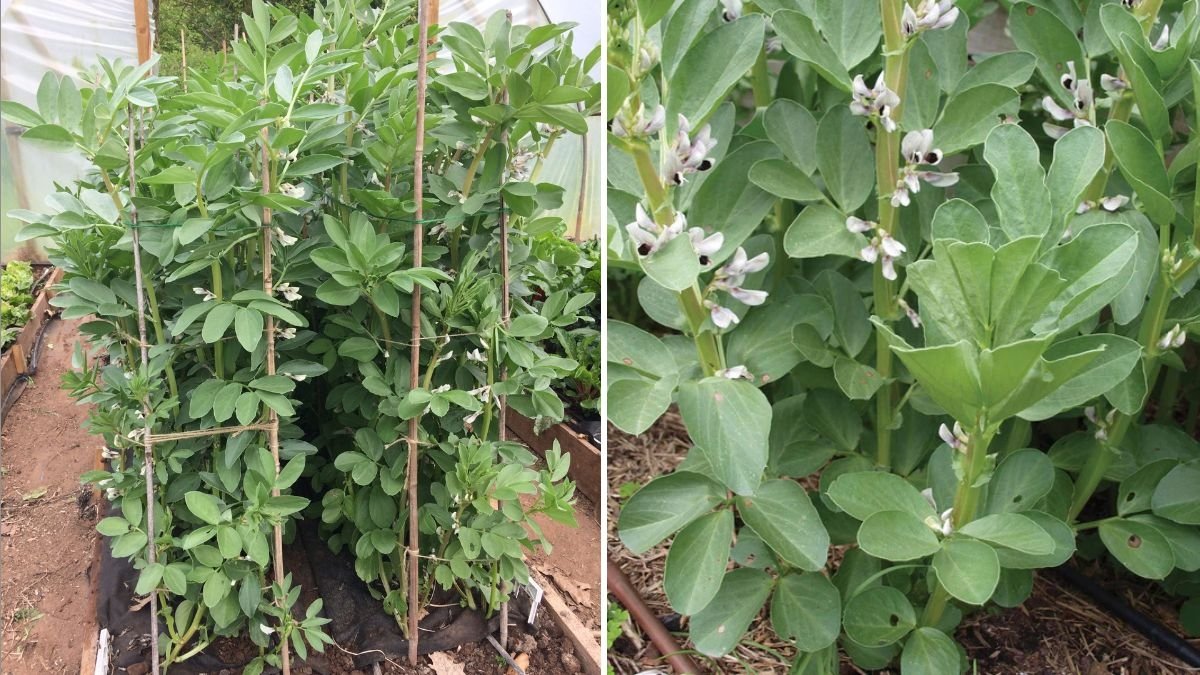
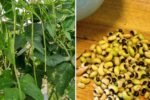
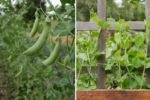

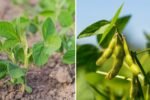

Leave A Comment